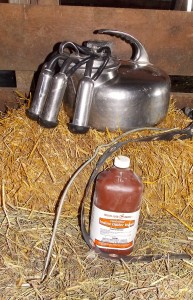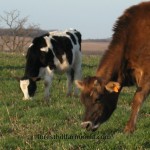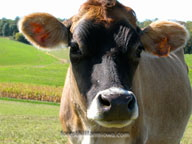 I'd like to start using a different milker with our dairy cows. Currently we're using a Surge bucket style milker. Clarisse has a very low udder so the bucket doesn't work well for her. With only four cows to milk, two at any given time, I've been researching claw style milkers. For every new thing I start there's a host of research involved. Reading manuals has become a hobby. Sometimes I think about taking shortcuts, just jumping in and getting started, but then I think of Mary.
I'd like to start using a different milker with our dairy cows. Currently we're using a Surge bucket style milker. Clarisse has a very low udder so the bucket doesn't work well for her. With only four cows to milk, two at any given time, I've been researching claw style milkers. For every new thing I start there's a host of research involved. Reading manuals has become a hobby. Sometimes I think about taking shortcuts, just jumping in and getting started, but then I think of Mary.
Several years ago I decided to breed my mare. My friend, Mary has a breeding facility. Mares from around the country come to her farm for breeding. She has beautiful stud horses of her own, and several others brought in for the breeding season. She uses artificial insemination to breed regardless whether the mare is on the farm or product is being shipped across the country. For years Mary used an older collection system. It worked well but she wanted a more modern one. Mary upgraded to a phantom collection system with a reservoir that held warm, sterilized water to simulate a mare's body temperature. It was padded in all the areas a real mare would have padding. It was fancy.
A couple weeks after Mary introduced her stud to the phantom she noticed breeding problems. Soon the stud refused to go near the phantom, let alone mount it. Unable to resolve the issues on her own, she called the veterinarian. After a thorough examination the vet couldn't find any physical issues with the studs. She asked Mary to walk her through the collection process. Mary excused herself and went to get sterile water for the reservoir. Returning, she showed the vet her procedure. Mary placed the collection tube along with the sterilized water sleeve into the phantom. The teaser mare was brought in, the stud was led into the barn, too. When the mare was positioned near the phantom, the stud mounted the phantom, screeched, jumped off, and lashed out. When a stud doesn't behave in a gentle manner he's returned to his stall for a 'time out' where he's supposed to think about his behavior and make a change. After a few minutes he was brought in again. This time he mounted the phantom, let out a louder, longer screech, turned and kicked. He wouldn't cooperate. The vet gave him a brief exam. She looked over the phantom. No sharp edges, nothing unusual. Then the vet noticed steam vapor rising from the reservoir. “Mary, what did you put in the reservoir?” she asked.
“Boiling water.”
“Boiling?”
“Well, close to it. I run distilled water through my coffee maker to sterilize the collection cup, then I pour the rest into the reservoir.”
“Mary, sterilizing the reservoir doesn't mean you pour boiling water into it!” The vet gave Mary clearer instructions.
So, to avoid being burned, I thoroughly research all the instructions. Thanks to Mary I learned from someone else's mistakes rather than my own.






